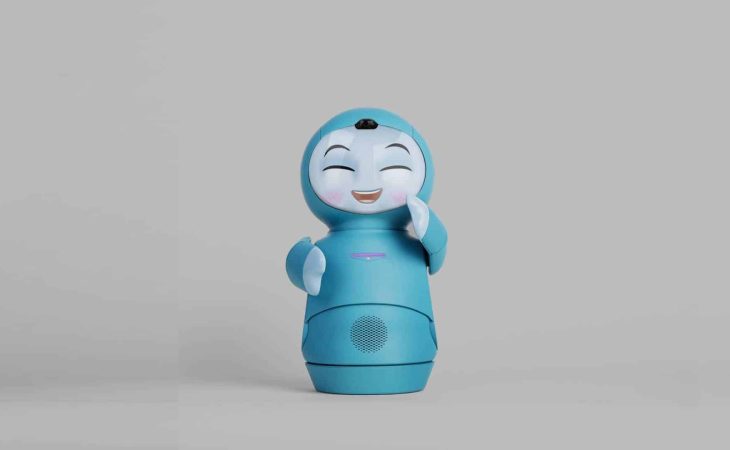It is really hard to consider a vacuum cleaner that is less human than the Roomba. But it can be if you make it possible for it to have its have thoughts. Almost immediately immediately after iRobot produced its Roomba, a community of autonomous vacuum cleaner enthusiasts began providing their Roombas names and backstories. One of the company’s early Tv set advertisements highlighted this not likely bond by showcasing men and women conversing about their Roombas like they have been folks. This is a large psychological expenditure for a instrument that only exists to obtain filth. However, Paolo Pirjanian, the former CTO at iRobot, absolutely gets it.
Pirjanian states that there is some thing in our minds that triggers when we witness a little something move on its’ very own. “Our knowledge tells me that it’s alive and properly with a consciousness of its individual,” says Pirjanian. Even however we know these devices stick to coded instructions, it is difficult not to see agency. These automatons were being not created to make human connections, but to execute a endeavor. This helps make our attachment even additional amazing. What if we could harness our normal empathy for the unforeseen and build robots whose job it to connect with humans?
Pirjanian founded Embodied in 2016 with Maja Mataric, a roboticist, to build a greater social robot. (Mataric resigned from Embodied in 2018 to concentrate on her study at the University of Southern California. The firm opened preorders for Moxie this week. It will ship in the autumn. Moxie, unlike other companion robots these types of as the household assistant Jibo and the Paro robotic seal, is built for young children. These expertise are generally taught to children by their academics and parents. Nevertheless, Pirjanian observed that numerous family members want additional assistance.
He says that studies show that young children currently are slipping driving in their conversation, social, psychological and conversation abilities as opposed to the previous technology. It could be partly due to too a great deal monitor time and social media use, as effectively as pressures at university which can lead to stress and depression. Each child can profit from improving their psychological and social techniques.
Moxie’s teardrop-formed head rests on a toddler blue, cylindrical overall body. It is a hybrid involving a videogame and a pet. The main goal of Moxie is to enhance children’s social competencies (like eye speak to) as properly as cognitive techniques (like studying comprehension). Moxie is a key lab robot that has been sent to enable small children grow to be much better good friends. Moxie gets Moxie’s mentor. Pirjanian hopes that the baby will aid increase their cognitive, psychological, social, and social abilities by training the robot.
Robots can execute repetitive expertise-creating tasks that would exhaust a human instructor. Although they can not exchange human interaction, they may be in a position to increase it. Kate Darling, a researcher at MIT Media Lab who is an specialist on human-robotic conversation and a research expert in social robotics, suggests that there is evidence to support the notion that social robots could enable youngsters build their capabilities. It is “preliminary evidence” but it is extremely promising.
Study is showing that companion robots can be specifically useful for little ones with autism and other neurological disorders. Children with autism, for example, typically have issues looking through facial expressions and eye contact. It aids to practice working with robots’ exaggerated emotions. Pirjanian promises Moxie was in the beginning intended for small children on the autism spectrum. However, throughout screening, mother and father who had neurotypical youngsters ended up capable to use it for their youngsters.
It is complicated to style and build companion robots that are efficient despite their guarantees. Erik Stolterman Bergqvist is a professor of human-laptop interaction at the College of Indiana Bloomington. He claims that “social robots do not have an apparent function”. They are designed to be your close friend but companionship is a difficult metric. Moxie is incredibly unique from robots with a task. You can obtain the filth to figure out if a Roomba was effective.
Stolterman Bergqvist states, “The problem a ton of designers are owning is that after you end planning items with an apparent goal it will become far more difficult.” “You are inquiring, ‘How do individuals relate?’ They relate in numerous and different methods.
Pirjanian and his workforce relied heavily on artificial intelligence to satisfy these worries. Moxie’s head has microphones and cameras. This facts is fed to equipment-mastering algorithms, which let the robotic to have purely natural discussions, acknowledge end users and search men and women in the eyes. Moxie’s processor crunches all data, with the exception of Google’s speech-recognition application. As Moxie learns to identify a child’s face, speech patterns, and developmental wants, the far more they interact with Moxie, the it results in being far more innovative.
Moxie updates weekly with new material that focuses on a concept this kind of as “being kind” and “making problems.” The baby is then questioned to total thematic missions, reporting back on their activities. It may possibly ask small children to generate a be aware for their mom and dad or come across a good friend. Pirjanian reported that Moxie is a “springboard” for improving upon social conversation in day by day lifestyle. He claims that Moxie is not meant to be a match-actively playing system. 5 several hours of gaming every working day will not aid. “The robotic encourages little ones to go out and exercise the capabilities in the real world. We want them to report again simply because which is how we want them to do well.”
Pirjanian believes that Moxie’s insatiable appetite for details is the critical to the robot’s success. The robotic can tailor its interactions to every little one, and the facts is very important for dad and mom to obtain comments. The robotic sleeps, but it also collects details from each individual day’s interactions, this sort of as the child’s examining comprehension, language use, and time expended on various responsibilities. The robot sends the knowledge to an app so dad and mom can monitor their child’s progress and monitor their emotional, cognitive, social and physical development. The robotic will also make tips about time. Moxie might advise that mothers and fathers acquire their little one to a speech therapist if it notices a repetitive verbal tic.
Parents might be hesitant about allowing an web-connected robotic to obtain information on their small children. While there are lots of guidelines that govern how companies can accumulate data from little ones, researchers get worried that they are not well prepared to offer with the flood of own details (together with images and conversations) that will be produced by social robots. Jason Borenstein, associate Director of the Center for Ethics and Technological innovation (Georgia Tech), says that children are specially susceptible since they do not totally comprehend the risks of owning their info gathered. “There wants to be far more dialogue at all levels about what information young children can and really should collect when they interact with robots.”
Pirjanian states that Embodied has positioned a higher priority on facts protection and privateness in Moxie considering the fact that its inception. The robotic is utilised by young children only if they consent. Most of the data that Moxie collects is accomplished locally on the robot’s laptop or computer. Pirjanian says that there was no way we would enable images leave the robotic. Pirjanian suggests that only audio facts is transmitted in excess of the web so it can be transcribed working with a speech-to-text algorithm. Moxie, which “sleeps”, analyzes the transcriptions and other info of the working day and encrypts them before sending them to a parent’s application. Pirjanian statements that Embodied does not have access to the details of any person child. Embodied only has aggregate anonymized knowledge from all its robots.
Moxie was not just about resolving technological challenges. Another 50 % of the challenge was to conquer the psychological obstacles that human-robotic interactions pose. This can be a lot more complicated than teaching a robot to speak. While we quickly attribute agency to autonomous equipment, there is a limit on how human-like our robots can be. Robots that seem way too a lot like humans will bring about the identical thoughts of disgust as the uncanny valley. Users may well not be in a position to kind any kind of relationship with robots if they are not as related as us.
Roboticists are nonetheless arguing about no matter whether companion robots should be created a lot more human-like. Most roboticists have selected to limit the use of human attributes and erred on warning. Robots such as Jibo or ElliQ are more summary and as devoted to human kind as Picasso’s portraits. Robots with eyes and mouths are commonly animated on a flat-screen display screen, detracting from their humanity.
Pirjanian and his coworkers bucked a lot of of the developments with Moxie. Moxie’s teardrop-formed head functions a round display screen with two big, cartoonishly animated eyes and a mouth. Moxie is able to make eye get in touch with straight with its user by making use of machine eyesight. Pirjanian states that when you position eyes on a robot’s eyes, you have to make certain that they are not creepy. Eye contact is an essential part of this.
Moxie simply cannot move on its own but can tilt its head and bow at the centre. Moxie, in contrast to most companion bots, has two flipper-like arms. These are used to enrich its speech. Based on investigate in fields such as developmental psychology and animation, every of these layout capabilities was meticulously chosen to foster a romantic relationship concerning the robot’s consumer and it.
Moxie is not like the Roomba. Every little thing about it, from its coloration to its algorithms to its head, was created to foster associations with its customers. It may well even foster much better connections concerning end users if it succeeds.





